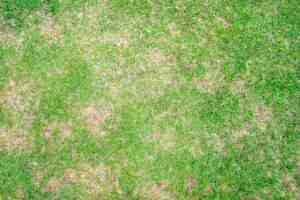How to Fix an Over-Fertilized Lawn: Tips and Tricks
A beautiful lawn is the pride and joy of any homeowner. It adds to the curb appeal of the house and provides a space for outdoor activities. To achieve a healthy and lush lawn, we often rely on fertilizers. However, if not used correctly, fertilizers can do more harm than good. Over-fertilization is a common mistake that many people make, and it can lead to burnt spots, yellow patches, and even death of the grass. If you have an over-fertilized lawn, don’t worry. In this article, we’ll guide you on how to fix an over-fertilized lawn and bring it back to life.
Identifying the Problem
The first step in fixing an over-fertilized lawn is to identify the problem. Here are some signs that indicate your lawn has been over-fertilized:
Yellow patches
If you notice yellow patches on your lawn, it’s a sign that the grass is stressed due to over-fertilization. These patches are caused by a buildup of nitrogen, which can burn the roots of the grass.
Burnt spots
Over-fertilization can cause burnt spots on your lawn. These spots are usually brown and dry, and the grass is dead.
Excessive growth
If you notice that your grass is growing faster than usual, it’s a sign of over-fertilization. The excess nutrients are causing the grass to grow rapidly, but this growth is not sustainable, and the grass will eventually die.
Weed growth
Over-fertilized lawns can attract weeds. Weeds thrive in nutrient-rich soil, and over-fertilization can provide them with the ideal conditions to grow.

How to Fix an Over-Fertilized Lawn
Now that you’ve identified the problem, it’s time to fix it. Here are some tips on how to fix an over-fertilized lawn:
Step 1: Water your lawn
The first step in fixing an over-fertilized lawn is to water it. Watering will help dilute the excess nutrients and flush them out of the soil. Water your lawn deeply, so the water penetrates the soil and reaches the roots of the grass.
Step 2: Add more soil
If your lawn is severely over-fertilized, you may need to add more soil to dilute the excess nutrients. Spread a layer of topsoil or compost over the affected areas and water it thoroughly.
Step 3: Remove the dead grass
If you have burnt spots on your lawn, you’ll need to remove the dead grass. Use a rake or a lawn mower to remove the dead grass and create a clean surface for new grass to grow.
Step 4: Reseed the lawn
After removing the dead grass, you’ll need to reseed the lawn. Choose a grass seed that is suitable for your soil type and climate. Spread the seed evenly over the affected areas and water it regularly
Step 5: Avoid fertilizing
After fixing your over-fertilized lawn, it’s essential to avoid fertilizing for a while. Allow the grass to recover and establish itself before adding any more nutrients. Once the grass has fully recovered, you can resume your fertilization schedule.
Step 6: Test your soil
To prevent over-fertilization in the future, it’s essential to test your soil regularly. A soil test will help you determine the nutrient content of your soil and the amount of fertilizer you need to apply. You can purchase a soil test kit from a garden center or hire a professional to do it for you.

FAQs about Fixing an Over-Fertilized Lawn
Here are some frequently asked questions about fixing an over-fertilized lawn:
Q1. Can over-fertilization cause permanent damage to my lawn?
Over-fertilization can cause damage to your lawn, but it’s usually not permanent. With the right care and maintenance, you can fix your over-fertilized lawn and restore it to its former beauty.
Q2. How long does it take for an over-fertilized lawn to recover?
The recovery time for an over-fertilized lawn depends on the severity of the damage. In most cases, it can take several weeks to several months for the grass to recover fully.
Q3. Can I fix an over-fertilized lawn without reseeding?
If the damage is not severe, you may be able to fix your over-fertilized lawn without reseeding. Watering your lawn and adding more soil can help dilute the excess nutrients and promote new growth.
Q4. How often should I fertilize my lawn?
The frequency of fertilization depends on several factors, such as soil type, grass type, and climate. In general, it’s recommended to fertilize your lawn two to four times a year.
Q5. Can I prevent over-fertilization?
Yes, you can prevent over-fertilization by following the instructions on the fertilizer package and testing your soil regularly. Avoid applying more fertilizer than necessary, and water your lawn deeply after fertilizing.
Q6. What should I do if my lawn is still not recovering after fixing the over-fertilization?
If your lawn is still not recovering after fixing the over-fertilization, it may be due to other underlying issues, such as pest infestations or diseases. In such cases, it’s best to seek professional help.
Conclusion
An over-fertilized lawn can be frustrating, but with the right care and maintenance, you can fix it. By following the tips and tricks outlined in this article, you can restore your lawn to its former beauty and prevent over-fertilization in the future. Remember to test your soil regularly and avoid applying more fertilizer than necessary. With a little bit of effort and patience, you can have a healthy and beautiful lawn.

